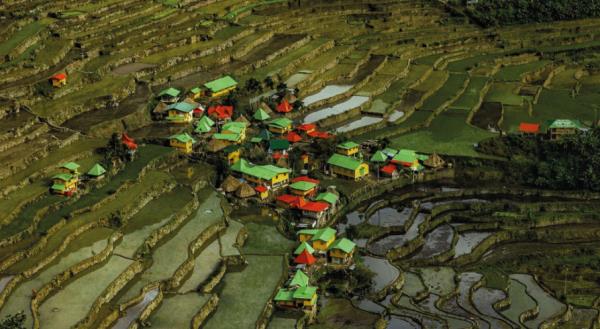15 July 2022

A partnership between Globe Telecom and Curvalux is bringing affordable, sustainable internet connectivity to low-income families across the Philippines
The Philippines is an archipelagic country in the western Pacific Ocean comprising more than 7,000 islands. The two largest, Luzon and Mindanao, represent two-thirds of the country’s total land area and around three-quarters of its total population, but there are nearly 2,000 populated islands across the archipelago – many of which are rural and remote.
Of the more than 110 million people living in the Philippines, over 40 million have no access to the internet. This is largely due to the geographical challenges of the environment, with the distance between the islands and large bodies of water to cross making it extremely difficult to install large- scale telecoms infrastructure. Around 10% of the households across the islands do not even have access to reliable power.
Globe Telecom, one of the country’s market-leading mobile network operators, has made it a top priority to find a way to transform connectivity in the Philippines – overcoming the significant challenges posed by the natural environment to bring affordable, sustainable, high-speed internet to as much of the population as possible.
Gerard Ortines, the telco’s head of business technical CAPEX management, is the man charged with tackling this challenge and has spent the past two years leading a major project to investigate new technologies that could provide the solution.

Globe needed to find a new solution – a technology that would enable them to deploy large-scale internet infrastructure across this beautiful and diverse landscape with minimal disruption, highest performance and, most importantly, at the lowest cost to those who needed it the most.
Globe began working with Curvalux over two years ago when Ortines met Curvalux’s founder and executive chairman Tom Choi – a satellite expert and the first in the world to bring the principles of satellite technology to the terrestrial telecommunications market.
The ‘Edge Nodes’ Tom had designed use focused multibeam technology to achieve high broadband performance, high capacity and exceptional interference mitigation but using minimal power and at a fraction of the cost of traditional terrestrial antenna. They were precisely the solution Ortines and his team were looking for to tackle the connectivity challenge they faced across the Philippine islands.
The project began with a ‘proof of concept’ trial in the centre of Manila, where a small number of Curvalux Edge Nodes were installed on a tower overlooking a small shopping mall that had previously struggled with poor internet connectivity. By focusing radio frequency beams onto the mall, the technology was able to provide total 2GB capacity with average 220Mbps per user download speeds to anyone inside who connected to the Wi-Fi.
With the technology proven successful on a small scale, Globe expanded the trial to a much bigger area. Semirara island – located in the Caluya archipelago, just south of Mindoro Island – is around 55 square kilometres and is home to one of the Philippines’ major mining operations. About 10,000 people live on Semirara, the vast majority of whom are employed by the mining company, and for many years the families there had been asking for better broadband connectivity across the island.
In September 2019, Curvalux installed a larger system of Edge Nodes on a mobile tower in the southern side of Metro Manila, Cavite. The proof of concept at Cavite with 68 friendlies was a success. Globe provided data speeds up to 50Mbps (plan offering at 50Mbps not technology limit) at an average distance of 2km, one of them reaching as far as 3.48km from the base station.
We have gotten excellent feedback from customers. Thanks to the multibeam phased array system, these could be focused on all of the main residential areas across the island, with CPEs also installed in central locations such as restaurants and hotels to provide community hotspot areas.
Since those initial proof of concept trials, the Globe/Curvalux partnership has continued at pace. There is now a plan to deploy Curvalux solutions on a phased approach.
It hasn’t all been easy. One of the biggest challenges as the project has rolled out has been around ensuring line of sight when dealing with signal shadowed behind buildings, more mountainous and densely forested islands across the archipelago, as the narrow beams of the Edge Nodes need direct line of sight with the CPEs at all times.
Curvalux and Globe tackling challenges together even led to further innovation from the Curvalux team. Based on the shared experiences with Globe in the Philippines, Curvalux created CPE+ - a more powerful receiver that delivers 698Mbps download speed at 2km distance that improved performance in areas with partially blocked signals, for example due to dense vegetation.
Note: This is a recent POC of CPE+ concept that provides a local Wi-Fi hotspot of 100 meter that delivers up to 30Mbps speed to the users.
“It’s this commitment to partnership that has really set Curvalux aside from other companies I have worked with in the past,” says Ortines. “You will always face challenges on any project and find issues that you need to work around. The sign of a true partner is when you work together to find a solution to that challenge, learning from the situation, learning from each other. That’s what we have with Curvalux and it’s something that I really value.”
Having slowed in 2020 as a result of the Covid-19 pandemic, the roll-out of the Globe/Curvalux project is now accelerating again, with many more sites due to come online in the coming months.
Globe is even looking ahead to a new connectivity innovation in CurvaNet – an implementation of Curvalux antennas on low earth orbiting satellites able to reach areas that are beyond the coverage of mobile phone towers. Globe Telecom is now exploring the possibility of using CurvaNet in remote parts of the Philippines leveraging existing Wi-Fi technology with the wider ecosystem.
Ortines believes that these technologies, as well as transforming connectivity in the Philippines, will play a significant role in improving internet access for people around the world.
“There are so many countries that have similar challenges to us, with difficult geographical landscapes to navigate and people of low incomes that cannot afford broadband connectivity via more traditional telecoms solutions,” he concludes. “This technology enables anyone to get connected. We strongly believe this will transform connectivity in the Philippines – improving the lives of families and businesses across the country and building a digital economy that is fit for the future.”







